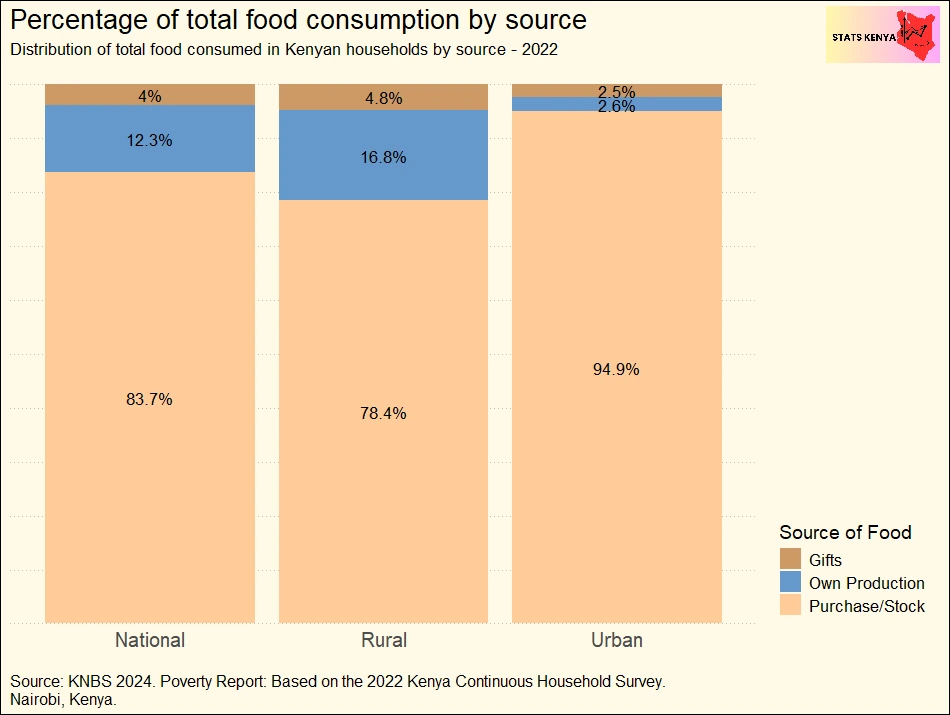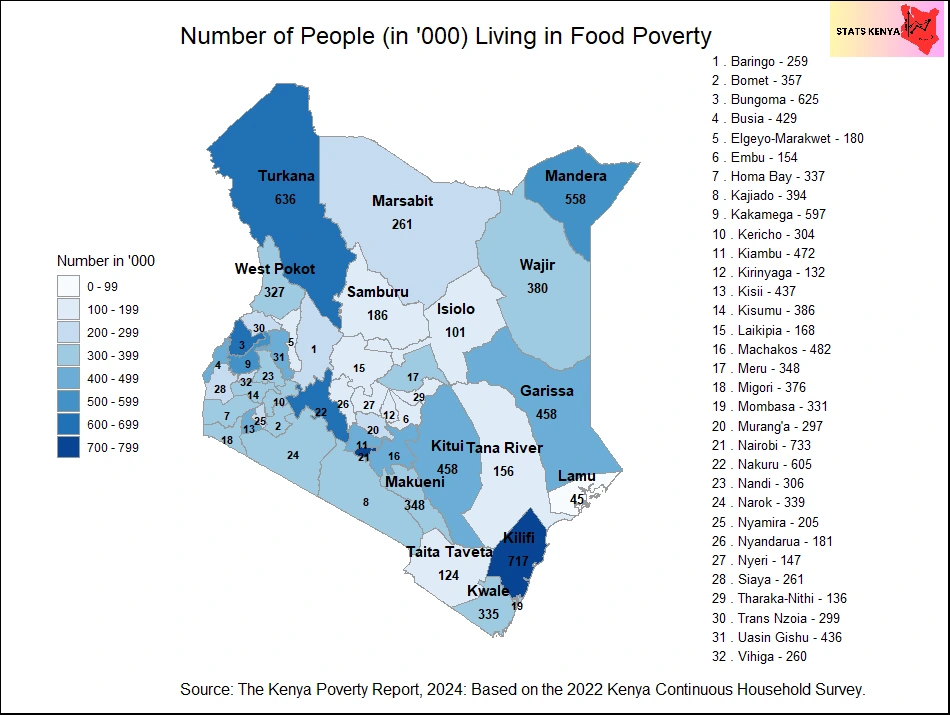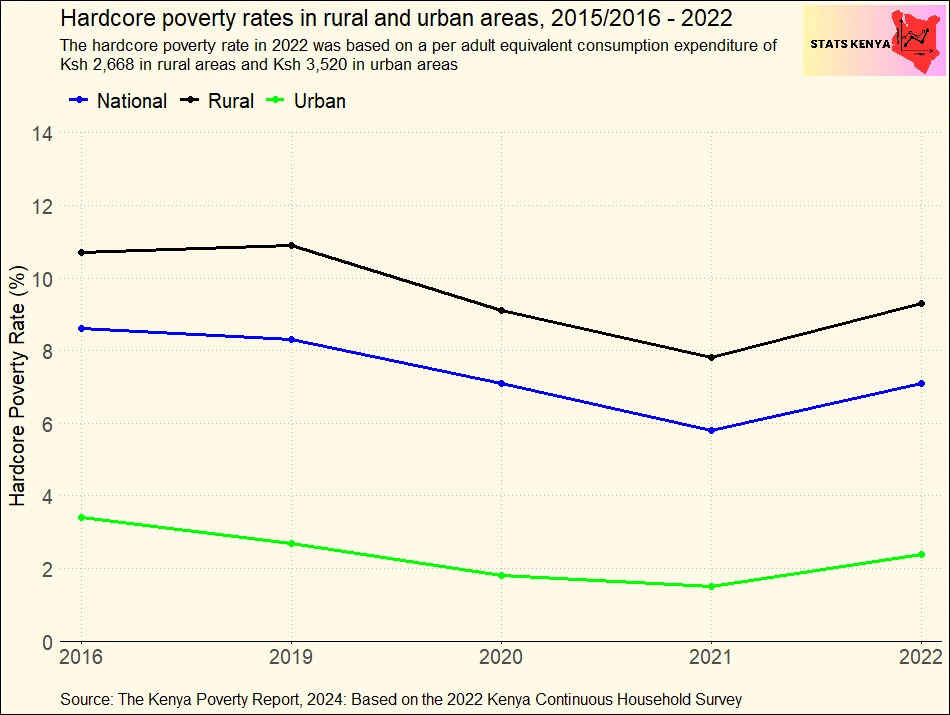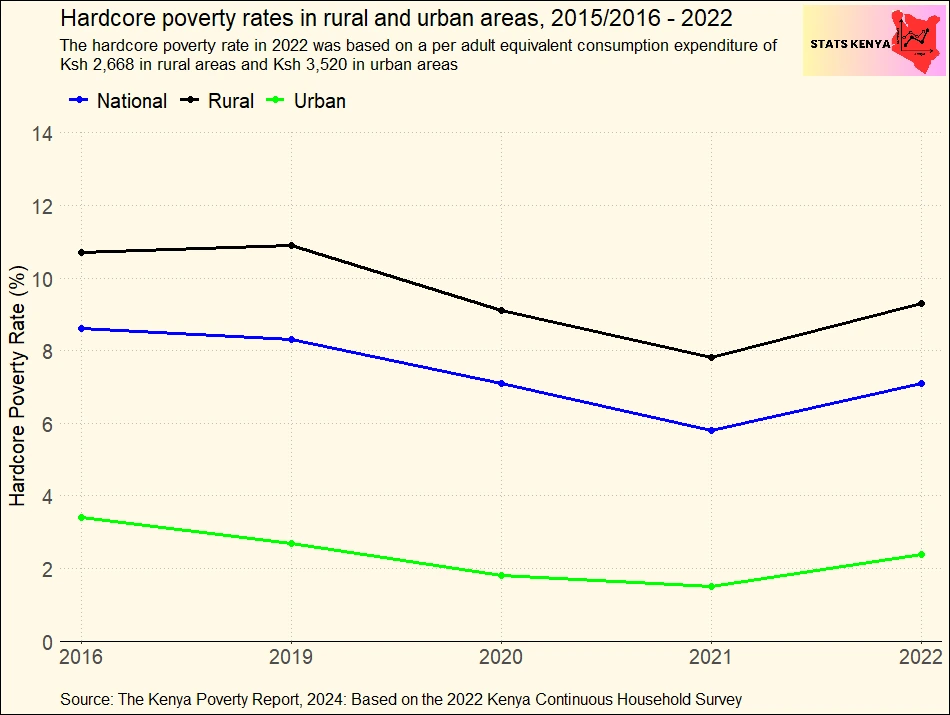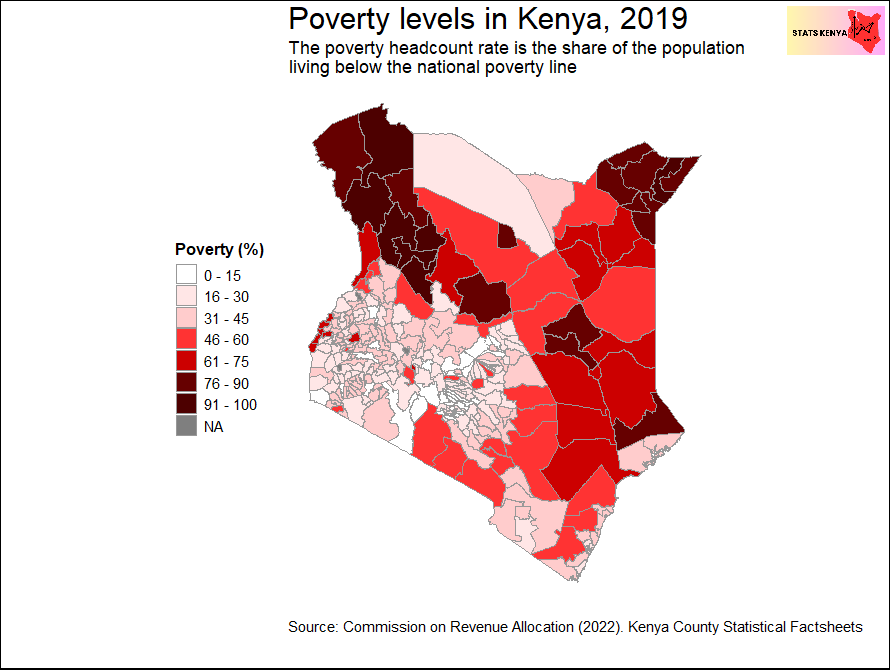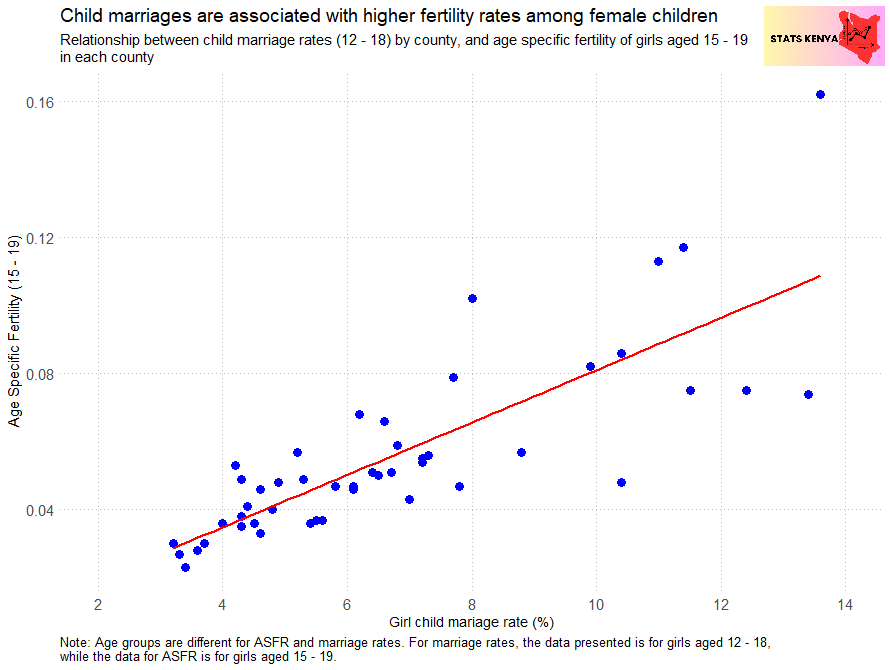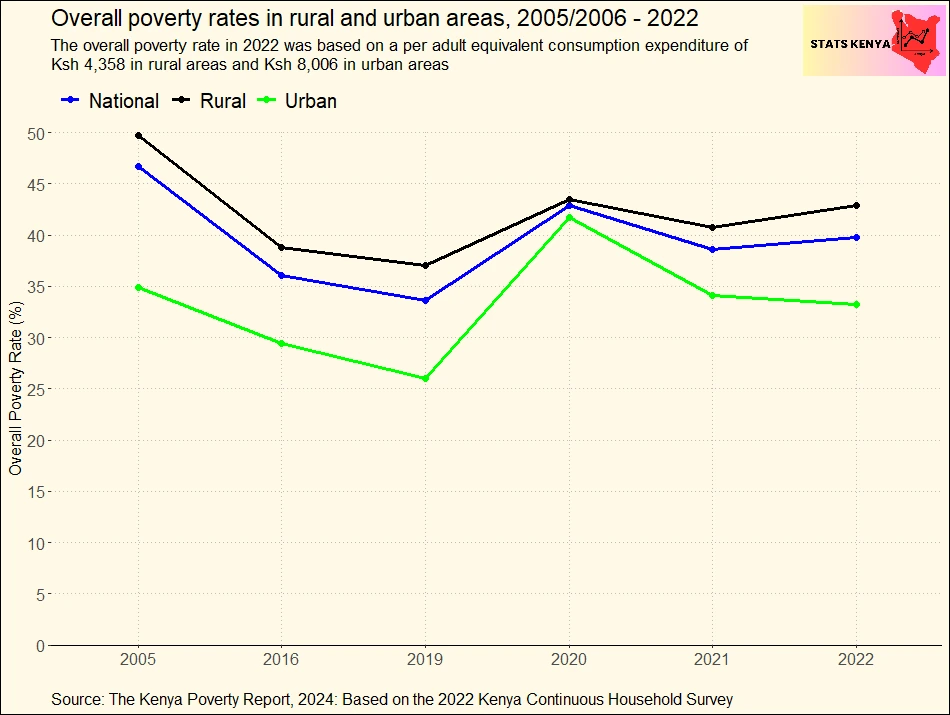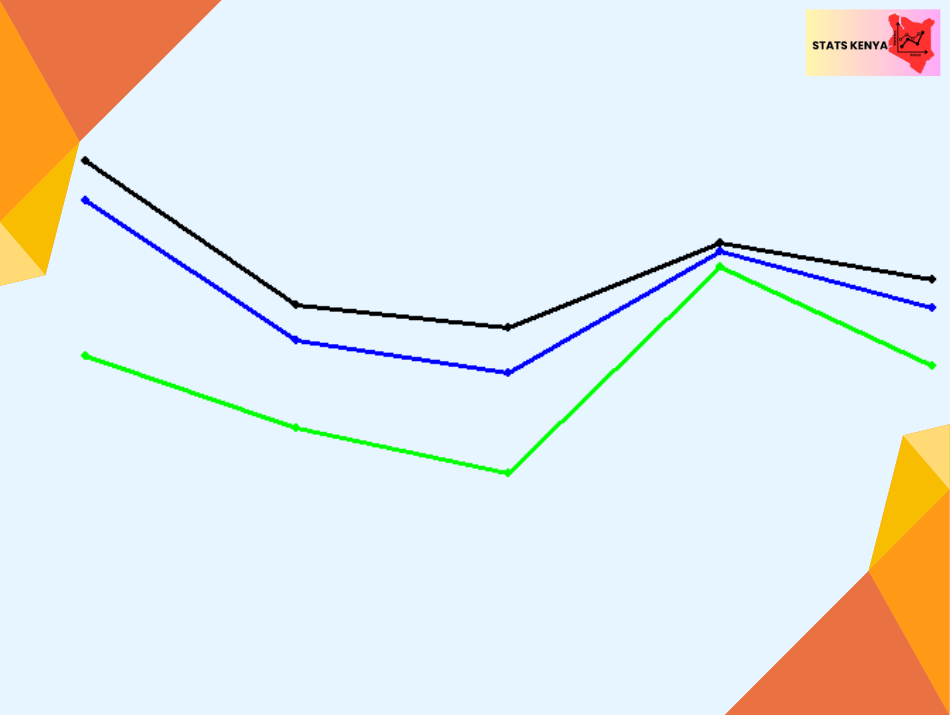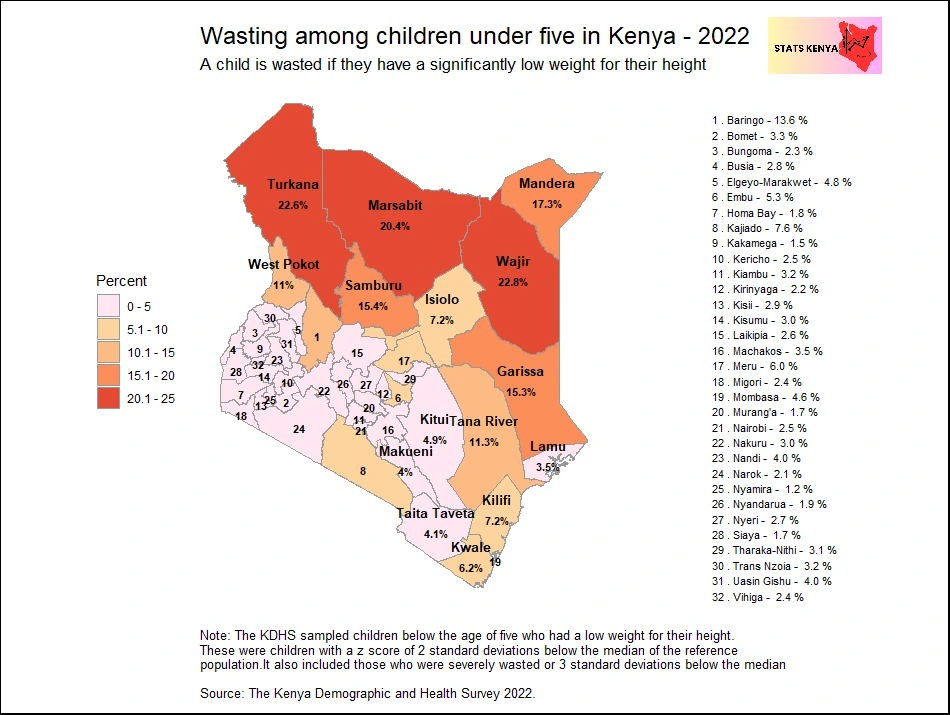Stats Kenya- Bringing Data to All Kenyans
Poverty
A Large Share of Food Consumed in Kenyan Households is Purchased
Where do most Kenyans get their food, and how does it affect their well-being? A 2022 Kenya Continuous and Household Survey (KCHS) highlights three major sources of food in most Kenyan households:
Purchases (including stock)
Own production
Gifts
The KCHS evaluates a household’s ...
Food Poverty Rate in Kenya - Number of People who Cannot Afford Food
The food poverty rate is the percentage of individuals whose monthly food consumption expenditure is lower than the food poverty line. It highlights individuals and households that cannot afford or access healthy food for daily sustenance.
Food poverty has been associated ...
Poverty Lines in Kenya - Measuring Food and Overall Poverty
How do we know if a Kenyan is poor? The poverty line is the threshold someone needs to meet to be considered poor.
The Kenya Household and Continuous Survey (KHCS) measures three different forms of poverty: overall (absolute) poverty, food poverty, ...
Hardcore Poverty Rates in Kenya by County
The hardcore poverty rate is the percentage of people or households whose total monthly consumption expenditure, including food, clothes, and other expenses, was lower than the food poverty line.
In Kenya, the food poverty line in urban areas was Ksh 3,520 ...
Poverty rates in Kenya by Constituency
The poverty headcount rate is the proportion of the population that lives below the national poverty line. Kenya's most recent poverty data comes from the 2021 Kenya Household Continuous Survey, which reported a headcount poverty rate of 38.6%, a food ...
Child marriages linked to higher fertility rates
Even though the extent of child marriages has reduced over the years, UNICEF estimates that approximately 650 million women today were married before they turned eighteen.[1]
In Kenya, 4.1% of females and 3.9% of males aged 12 – 15 were ...
Overall Poverty Rates in Kenya by County
The overall poverty rate describes the share of the population that cannot meet its basic food and non-food expenditures.
It differs from multidimensional poverty, which measures well-being across several indicators such as stunting, nutrition, education, health, sanitation, access to water, ...
Wealth Inequality in Kenya
The Gini coefficient, or the Gini index, is a statistical measure of wealth and income inequality within a nation or population. The Gini Index ranges from 0 to 1, with zero standing for perfect equality and one for perfect inequality.
The ...
Undernutrition and Wasting Among Children in Kenya
Wasting manifests under conditions of severe undernutrition, causing individuals to have a low weight for their height. In Kenya, it occurs when individuals and children living in food poverty do not receive enough nutritious food.
It can also occur after a ...
